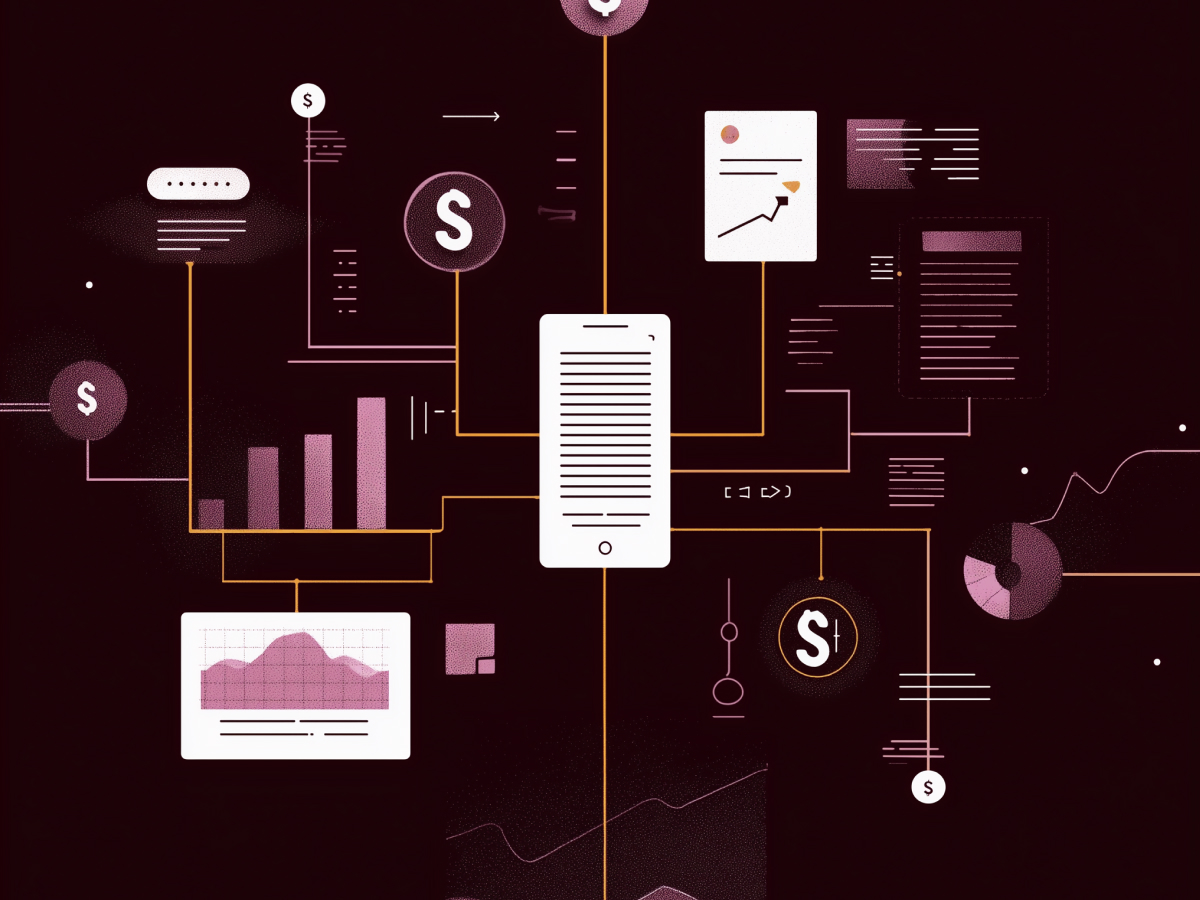Why lower-viewability ads might outperform the high ones — thanks to AI
AI and machine learning are disrupting digital advertising as we know it, bringing with it new insights into ad performance.
One of the most compelling discoveries is that lower-viewability placements, traditionally considered less effective, can often deliver better results than their high-viewability counterparts. These placements, when purchased at the right moment, capitalize on the strengths of AI-driven algorithms that analyze a vast array of signals beyond just viewability.
For example, lower-viewability ads can outperform high-viewability placements in campaigns targeting lower-funnel goals, such as conversions or purchases. AI analyzes contextual data, user behavior, and timing, helping advertisers hit performance metrics more effectively than traditional ad buying strategies that prioritize high viewability.
This insight challenges long-standing assumptions by third-party vendors who often measure ad success based solely on viewability, showing that it’s the right combination of context, audience, and timing that drives results—not just whether the ad is visible for a set period.
High viewability doesn’t always mean better ads – here’s why
High viewability has long been perceived as a hallmark of quality in advertising, but AI-driven insights are proving that this isn’t always the case. The assumption that an ad with high viewability automatically leads to better performance is misleading, especially in campaigns with more specific goals.
When targeting audiences in the lower funnel, where conversions matter more than impressions, lower-viewability placements can outperform. For example, ads appearing in non-prime locations may still reach the right users at the right time, generating the desired action.
What’s important here is understanding that viewability, measured by simple metrics like how long an ad is visible, doesn’t capture the entire picture.
User engagement, context, and relevance are more powerful indicators of an ad’s effectiveness, and machine learning algorithms help identify these hidden opportunities.
IAB’s attention standards could be a step in the wrong direction
The Interactive Advertising Bureau (IAB) is taking steps to standardize attention metrics, a move that has ignited debate among advertisers.
Collaborating with the Media Rating Council, the IAB plans to accredit attention measurement vendors and develop guidelines to streamline how attention is measured across channels.
While this effort is aimed at helping advertisers make more informed decisions, there’s a looming concern that standardization could oversimplify the complex nature of attention metrics, much like what happened with viewability standards.
Advertisers worry that flexibility may be lost in this process, particularly when attention metrics involve diverse methods of measurement such as mouse movements, eye-tracking, or engagement times. Simplifying these metrics into a one-size-fits-all standard may ignore key nuances and impact the ability to customize strategies for different campaign objectives.
What you need to know about the IAB’s new attention standards
The IAB’s Attention Measurement Task Force, working alongside the Media Rating Council, has kicked off an effort to accredit attention measurement vendors and release comprehensive guidelines—meant to help advertisers measure attention consistently across different platforms and partners.
The challenge here lies in maintaining flexibility while avoiding the pitfalls of oversimplification.
Much like the case with viewability metrics, there is concern that boiling attention down to a single standard might remove the adaptability that advertisers need to respond to unique campaign requirements. While uniform metrics can be convenient, they risk missing the complexities that drive performance in modern advertising.
The danger of simplifying attention metrics too much
If attention metrics are treated the same way viewability metrics have been in the past, campaigns may face a rigid “high or low attention” requirement. Oversimplification can be detrimental here, as it may lead to missed opportunities for performance improvements.
Advertisers could find themselves overlooking other key performance metrics such as CPA (Cost per Acquisition) and ROAS (Return on Ad Spend).
These indicators, which are often better measures of campaign success, might be downplayed if the focus shifts too heavily toward attention scores. A narrow view of attention could lead to inflated costs (yield) and reduced supply, ultimately hurting campaign performance.
Why viewability metrics were never meant to measure everything
Viewability metrics were introduced to solve a very specific problem: making sure ads purchased through programmatic channels were actually visible on the page. Early in digital advertising, fraud and non-viewable ads plagued the industry, and viewability provided protection against wasted spend.
But viewability, by nature, only solves part of the equation. While it makes sure an ad appears in front of a user, it doesn’t guarantee that the ad will capture their attention or drive engagement.
Attention metrics, on the other hand, are far more complex. They go beyond placement to consider factors like the creative’s ability to engage, the user’s mindset, and the surrounding context.
Viewability saved us from ad fraud – but it’s not the full picture
Viewability helped address the issue of ad fraud by making sure ads were actually visible to users on the screen, protecting advertisers from paying for impressions that never had a chance of being seen. This became a default safeguard in programmatic advertising, helping reduce fraud and improve transparency.
Attention metrics, however, deal with a different set of challenges. There’s no rampant issue of “inattention fraud” in the same way there was with non-viewable ads.
Attention involves a combination of factors like creative quality, relevance, and audience mindset—things that viewability metrics can’t measure. While viewability solved one problem, attention requires a more nuanced approach.
Don’t rely on attention scores alone – here’s what you’re missing
Focusing too much on attention scores can backfire, as overreliance may artificially limit ad supply and drive up costs without delivering better results. Yield might increase due to restricted inventory, but this doesn’t necessarily equate to better campaign performance.
Advertisers can still achieve strong results using other metrics such as CPA (Cost per Acquisition) and ROAS (Return on Ad Spend), even if attention scores are not maximized. The key is to strike a balance, using attention metrics as just one part of a broader performance strategy, rather than the sole measure of success.
Why measuring attention is way more complicated than viewability
Measuring viewability is straightforward: 50% of an ad’s pixels must be visible on the screen for at least one continuous second. Attention, by contrast, is a much more complex metric. It can be tracked through various indicators like mouse movement, cursor hover time, eye-tracking, and even user engagement with the ad.
This variety is what makes standardization difficult. Unlike viewability, which applies a simple, universal standard, attention involves more nuanced and variable data points that are harder to measure consistently across platforms and ad formats.
The complexity requires advertisers to think beyond a single metric and instead consider multiple factors when assessing the effectiveness of their ads.
Standardizing attention metrics could oversimplify your campaigns
Standardizing attention metrics will likely require compromises, either in the complexity of the data being collected or the scale at which it can be used. For example, while eye-tracking is highly useful in understanding attention, it’s often considered invasive and unlikely to be widely adopted.
Opt-in systems may limit the breadth of available data, reducing its scalability.
The complexity of attention measurement means advertisers will need to be cautious about adopting any single standard, as doing so could strip campaigns of the flexibility needed to respond to diverse audience behaviors and ad formats.
Why trying to categorize attention might do more harm than good
Reducing attention metrics to simplistic categories like “high” or “low” attention risks oversimplifying the diverse factors that drive consumer engagement. Audience interests, lifestyle, and mindset vary widely and cannot be easily distilled into binary categories.
Today’s programmatic technology provides advertisers with the tools to better manage these complexities, far beyond what early viewability standards offered. But attempting to standardize attention metrics too rigidly could ignore this progress and limit the adaptability advertisers now have.
How dynamic and flexible attention metrics can transform your ads
Advertisers who treat attention metrics as dynamic and flexible inputs—rather than as binary requirements—stand to gain the most. Attention is just one of many elements that influence campaign success, and its importance can vary depending on the creative, user behavior, and campaign goals.
For example, an ad designed to capture attention through eye-catching visuals might still succeed even if viewers glance at it for only a second.
A rigid high-attention requirement could prevent advertisers from using such creatives in their campaigns, limiting their potential impact.
Let flexibility in attention metrics testing drive your ad success
Advertisers need the freedom to test different attention metrics without being confined to a single standard. Through letting ad tech providers experiment with different methods, advertisers can optimize campaigns based on multiple inputs, including creative elements, targeting, and audience behavior.
Flexible testing helps advertisers fine-tune their campaigns and find the right balance between attention, engagement, and conversion, ultimately improving performance across different metrics.
How AI and data-driven ads are shaping the future of attention metrics
AI-driven algorithms offer advertisers the ability to leverage multiple definitions of attention, creating opportunities to optimize campaigns in ways that standardized metrics can’t. Through incorporating a variety of solutions from different vendors, advertisers can assess campaigns from multiple angles and adjust their strategies accordingly.
This ultimately provides deeper insights into consumer behavior, so that advertisers can experiment with creative, placement, and targeting to maximize results.
How to amplify your ads by integrating attention metrics into AI algorithms
Rather than viewing attention metrics as a standalone requirement, advertisers should integrate them into AI-driven buying algorithms—letting advertisers fully leverage the capabilities of data-driven decision-making, ultimately allowing for more precise campaign optimizations based on real-time data.
Integrating attention into AI-powered ad buying processes allows advertisers to use the most relevant signals for each campaign, helping them reach their performance goals with greater efficiency.
Final thoughts
Are you relying on outdated metrics that limit your brand’s potential? It’s time to move beyond rigid standards and tap into more dynamic, flexible attention strategies. How will you adapt your approach to leverage the full power of AI-driven insights?




